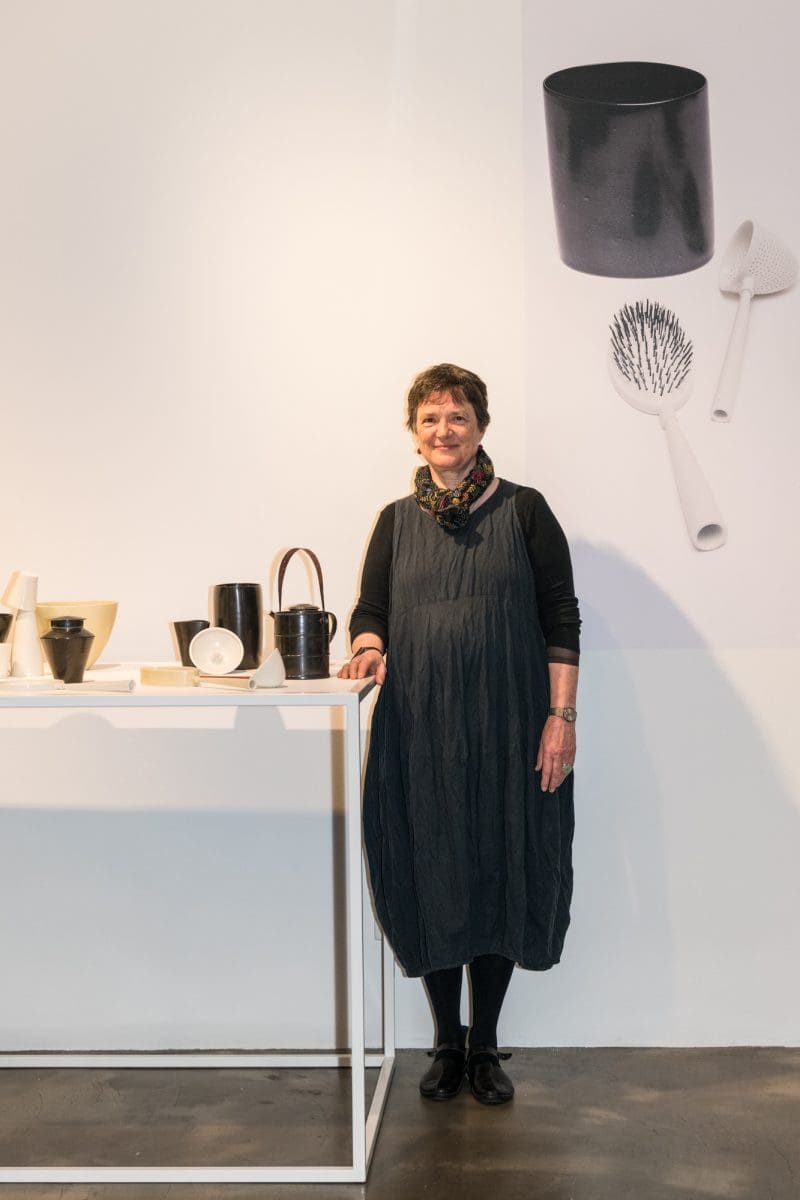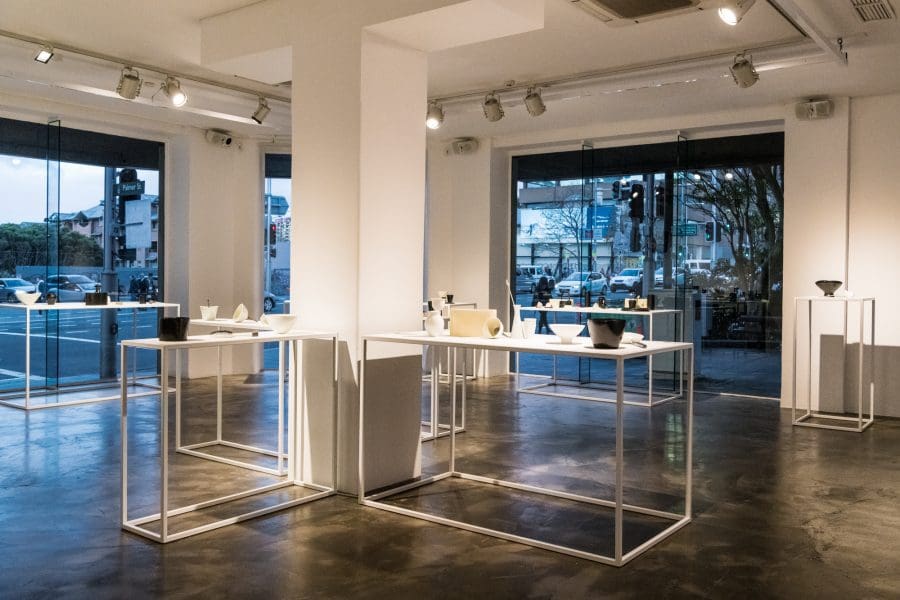
Place-driven Practice
Running for just two weeks across various locations in greater Walyalup, the Fremantle Biennale: Sanctuary, seeks to invite artists and audiences to engage with the built, natural and historic environment of the region.





In 2019 the Australian Design Centre invited ceramicist Prue Venables to exhibit a new collection of her enigmatic, metal-augmented porcelain objects for their Living Treasures series. Little, monochromatic spoons, bowls and funnels appear resolutely functional. Yet they are finely crafted and so unlike commercial domestic products that it’s easier to imagine caressing and admiring them than stirring or scrubbing with them. Living Treasures provides an uncommonly future-facing platform for senior artists. For Venables, the exhibition occasioned an intensification of her slow burn, exploratory studio rhythms, whereby metalwork attachments became a firmer presence in her oeuvre. Sheridan Hart spoke with Venables about thinking in metal, and why computers make people want to work with clay.
Sheridan Hart: Your practice began with ceramics and later took on new materials like wood and metal. How did this begin?
Prue Venables: At first, I just wanted to make jewellery for myself. Back then, I was head of ceramics, doing a lot of administration. I got itchy fingers – and the silversmithing department was just across the corridor. I began sitting in on classes and taking some short courses. I wanted the challenge of working in something I didn’t know anything about. I made porcelain objects with metal-reinforced joints, and later I could actually make whole components in metal. It was a 14-year process.
SH: Ceramic work unfolds in stages: shaping, drying, firing, glazing. Is sequence important in your practice?
PV: I make up my own sequence. That’s really important. When I teach, I don’t teach technique. I want my students to explore what object qualities matter to them. I don’t prescribe to them or for myself.
When I first approached jewellery, I only thought I would make things for myself. I went to learn from Viliama Grakalic in Melbourne.
SH: Was there a particular object you made that helped you to feel you’d arrived as a metalsmith?
PV: There are some porcelain funnels in this exhibition with metal strainers and spouts. They’re truly half and half, a proper merging. I realised I can actually think in both materials. I can make a wider range of material choices now. This whole process has led me to be ready for the next bit. That’s what I’m excited about.
SH: Much of your work is designed to be useful in the home. How do you feel when your objects leave the gallery?
PV: Part of being a maker is to be able to let go of things. At Harrow [London] where I studied, we weren’t allowed to keep our work. If we wanted anything, we had to buy it. They were teaching us to not get attached.
It’s like a musician practicing scales – you’d never record the scales. If I asked to keep something, my tutor Jerome Abo would ask, “Why do you want it? Make a better one and keep that.” It was the most fantastic advice. I became able to abandon things that weren’t working.
People wouldn’t understand that these days: there’s an imperative to sell and accumulate as much as possible.

SH: Arrangement plays a big role in how we encounter your objects in the gallery. What is your grouping process?
PV: I group things because in life you group things. In your kitchen or cupboard, you put things together, according to how they fit together, or fit in a space, or which room, activity, people or other objects they belong to. It’s part of everybody’s life.
I love watching the way different cultures use, handle and store objects. I once designed functional dinnerware for a Japanese factory. You begin to understand how all activities we do with our hands, like food preparation or writing, are surrounded by objects.
SH: In our kitchens objects proliferate, but in some areas, like writing, or listening to music, we might use just one, a computer.
PV: Yes, but there are still shops that sell just pens! I think there’s something in our culture that prevents us from eliminating those things. They say pottery is the new yoga. People want physical contact, to put their hands in clay. I suspect that’s why you can still buy pens.
Computers and phones have caused a loss of everyday physicality, so we search for it elsewhere. We want to hold a pen, shape clay, turn the page. People are more aware of the healthiness and satisfaction of doing and making now.
SH: In the studio you work with fire, water, countless tools and machinery. Tell me about the physicality of your work.
PV: The work might be hard or physical, but there’s something about sitting and focussing that is very calming. It becomes a sanctuary, and you start to appreciate the beauty of the tools themselves.
I actually love tools. I’ve collected many over the years. Some are from my mother’s kitchen. Others I made in my student days, from old rulers, pieces of hacksaw blade, clock springs.
SH: Your objects are functional household items, but their aura of beauty makes them very sculptural too. Do you think people use them?
PV: Some I don’t think anyone will use, but they all come from the idea of useful things, or of usefulness. I never define them, however. I allow them to be complex.
I learned this open approach from studying science. If you keep one end result in mind, your work will be controlled by what you expect, and you’ll miss the questions that can be explored along the way.
Living Treasures: Masters of Australian Craft: Prue Venables
JamFactory
7 May – 11 June 2021
Bunbury Regional Art Gallery
3 September – 14 November 2021
Hawkesbury Regional Gallery
2 December – 13 February 2022
Noosa Regional Gallery
4 March – 1 May 2022
Newcastle Art Gallery
28 May – 7 August 2022
Cowra Regional Art Gallery
20 August – 2 October 2022